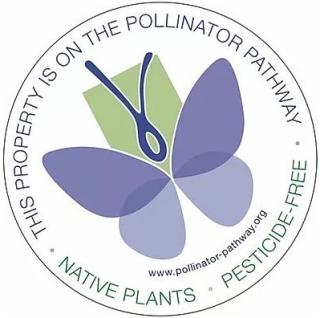Pollinator Pathway Project

Pollinators are responsible for 1 out of 3 bites of food we take each day, and yet pollinators are at critical point in their own survival. Not only have bee populations seen sharp declines, monarch butterflies have declined by 94.6% in the last 20 years.
We know that more nectar and pollen sources provided by more flowering plants and trees will help improve their health and numbers.To help make a positive impact on this increasingly important challenge we face, it is critical that we begin to rethink how we manage our landscape. This is where the idea of creating pollinator pathways comes in. The Pollinator Pathway Project started in 2015, and has now spread to over 85 towns across Connecticut and New York.
To kick off this project, the Town of Stonington's DPW and a dedicated local resident volunteer planted a pollinator garden in the spring of 2020 at Town Hall, Matthews Park, and the Fourth District Voting Hall, while the Beautification Committee planted pollinator gardens in various locations in dowtown Pawcatuck village. With the support of volunteers we hope to identify and add a series of both town-managed and private locations for additional pathways with the goal of having numerous locations over the coming years. See our current locations here.
A key part of this effort lies with our community members, and so we are asking people to consider eliminating the use of chemicals and then planting native, pollinator-friendly plants. It can start small, a window box or small segment of your lawn. This is a great example of how a small change can make a big difference.
Getting started is easy.
- Eliminate the use of chemicals and synthetic fertilizers on your lawn.
- Add anywhere from one pollinator-friendly tree, shrub or planter, to a small pollinator garden or a full meadow.
- If you decide to join this effort, please consider taking the Pollinator Pledge. The form can be found below and emailed to us, or visit us at Town Hall.
The Pollinator Pathways website offers numerous resources to help you get started. Hard copy resources can also be made available upon request.
If you chose, as part of the pledge, to share your address we will add your garden to our local pollinator tracking map found here. By filling in this simple form we will be able to track progress made in our community. The aim is not only to increase that number, but also work towards seeing pathways of connection. Please also send us your photos!
Making these changes has additional benefits. For instance, water conservation and decreased pollution. Replacing grass and ornamentals with native shrubs and plants will reduce your landscape’s watering needs because these plants require less water. Moreover, reducing pollution is important for the health of residents, and those whose livelihoods depend on it.
Runoff from lawns using chemicals and synthetic fertilizers is a significant source of nitrogen pollution in our local waterways. Stonington is home to the last commercial fishing fleet in Connecticut and a number of commercial shellfishing operations, it also offers recreational fishing and shellfishing for both residents and visitors. The Pollinator Pathway project gives residents a way to make a positive contribution on this important issue.
If you have questions or ideas please email us at StoningtonPollinators@stonington-ct.gov. We already have a volunteer ready to answer specific questions and offer virtual assistance. We also encourage residents to post photos on social media as they begin working on their own pollinator pathway using #SustainableStonington and @TownofStoningtonCT.
TAKE THE POLLINATOR PATHWAY PLEDGE
I would like to join the Stonington Pollinator Pathway. I pledge to support and protect local pollinators by adding at least one native plant to my yard and I will refrain from the use of pesticides and herbicides.
Features to include:
- A sequence of blooms from spring to fall, especially native host plants & pollinator favorites
- A water feature (bird bath, fountain or natural source)
- Shelter such as leaf mulch, bee houses, and uncut plant stems during winter
- Plant a diversity of flowers, as there is a great diversity among pollinators
- Organic practices such as compost (no treated mulch)
My street address for the Pollinator Map______________________________
My email address for information____________________________________
SIGNED:___________________________________________________________

